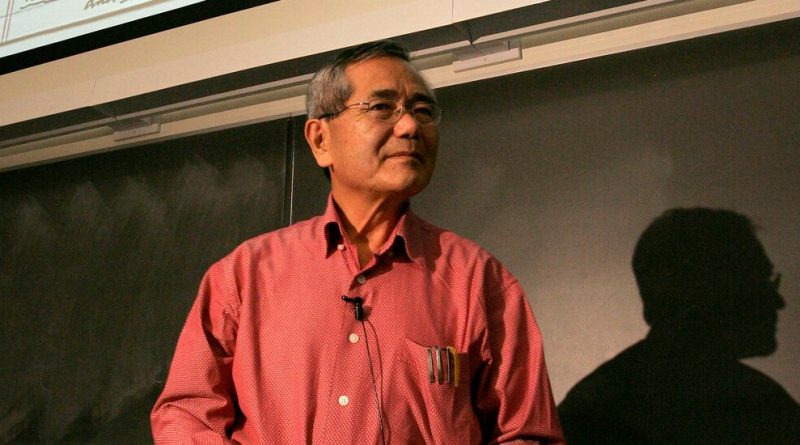Ei-ichi Negishi, Nobel Prize Winner in Chemistry, Dies at 85
[ad_1]
Ei-ichi Negishi, who shared the Nobel Prize in Chemistry in 2010 for developing techniques now ubiquitous in the manufacture of pharmaceuticals, died on June 6 in Indianapolis. He was 85.
His death, at a hospital, was announced by Purdue University, where Dr. Negishi was a professor for four decades. No cause was given.
Dr. Negishi’s Nobel-winning research involved chemical reactions that produce complex organic compounds — large carbon-based molecules used in drugs, plastics and many other industrial materials. Coaxing one carbon atom to bond to another can be difficult, but Dr. Negishi and other chemists figured out that metals, palladium in particular, could be used as intermediary matchmakers.
In these reactions, two carbon-based molecules first stick to the palladium. The palladium then disconnects from them, and the two carbons attach to each other, forming a new, larger molecule. With the palladium working as a catalyst, the organic chemistry reactions can run at lower temperatures with fewer steps, reducing cost and waste.
“It just allows this enormous selectivity,” said James M. Tour, a professor of chemistry at Rice University in Houston, who was a graduate student of Dr. Negishi’s. “When you build molecules, you have to be able to work on one part of the molecule without destroying the other part.”
Chemists had discovered the magic of palladium earlier, and in 1977 Dr. Negishi built on that work by using zinc compounds to ease the mingling of carbon atoms on palladium. That made the process more applicable to a wider range of reactions.
“Without organic compounds, none of us can live,” Dr. Negishi said in a news conference on the day the Nobel was announced. “One of our major dream goals is to be able to synthesize any organic compounds in high yield, high efficiency.”
He gave as an analogy the creating of elaborate Lego formations. “That is a pretty accurate description of what we have been trying to do,” he said.
Traditionally, organic chemists largely limited themselves to molecules using the 10 or so elements found in organic compounds. Dr. Negishi said that he and others had “realized that we should make use of the entire periodic table.”
By expanding to other elements like palladium, chemists in effect increased the number of Lego pieces they could use, and that opened new avenues to synthesize the molecules they wanted to make.
Dr. Negishi shared the 2010 Nobel in Chemistry with Richard F. Heck of the University of Delaware and Akira Suzuki of Hokkaido University in Sapporo, Japan.
Unlike many Nobelists who say they never expected to receive the highest honor in the science world, Dr. Negishi said it was “not a major surprise” to receive an early morning phone call on Oct. 6, 2010, from the Royal Swedish Academy of Sciences, which administers the Nobels.
Dr. Tour said Dr. Negishi had pursued research that he thought was Nobel-worthy. “He dreamed about it,” Dr. Tour said. “He often discussed the Nobel Prize. And what would have to be done to win this.”
To that end, Dr. Negishi could be relentless. “He was extremely exacting,” Dr. Tour said. “He had no trouble pushing people to the point of tears at a blackboard.”
Dr. Tour said Dr. Negishi also had a generous side. “If anybody would walk up to his office door and knock, his door was always open,” Dr. Tour said. “And you’d usually sit down for much longer than you bargained for, because he analyzed the whole project you’re working on, not just the question that you’re asking.”
Ei-ichi Negishi was born on July 14, 1935, in Changchun, China, then known as Hsinking, the capital of the Japanese-controlled part of the country, in the northeast. His family moved to Tokyo after World War II and then to a rural area outside Tokyo, where his father farmed and his mother took care of the family’s five children.
After graduating from the University of Tokyo in 1958 with a bachelor of engineering degree, he worked as a research chemist at the Iwakuni Research Laboratories in Japan. By his account, he realized that he needed more academic training but felt that graduate school was financially out of reach.
His fortunes changed in 1960, however, when he won a Fulbright scholarship to attend the University of Pennsylvania. After finishing his doctorate in 1963, he joined the laboratory of Herbert C. Brown at Purdue. Dr. Brown became the first Purdue faculty member to win a Nobel Prize, in 1979; Dr. Negishi was the second.
“In terms of research, he is my only mentor,” Dr. Negishi said of Dr. Brown in an interview after the Nobel announcement. “I have had other professors, but he taught me just about everything as to how to do research.”
Dr. Negishi moved to Syracuse University as an assistant professor in 1972 and returned to Purdue in 1979 as a professor. He retired in 2019, having been an author of more than 400 scientific papers.
In 2010, Dr. Negishi, who remained a Japanese citizen, received the Order of Culture from Emperor Akihito. He was elected to the National Academy of Sciences in 2014.
Survivors include two daughters, four grandchildren and one great-granddaughter. His wife of 58 years, Sumire, died in 2018.
“When he got his Nobel Prize, he became nicer,” Dr. Tour said. “He’d take his wallet out of his pocket, and protruding from his wallet was the Nobel Prize medallion.”
Dr. Tour said Dr. Negishi would pass the medal around and didn’t mind when someone once dropped it. “You could see the ding in one side of it,” Dr. Tour said. “And he just laughed about it.”
